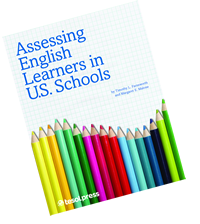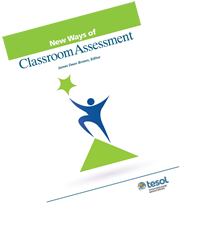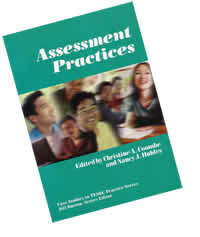Grammatically Speaking
by T. Leo Schmitt
If you have a question for Grammatically Speaking, please send it to GrammaticallySpeaking@tesol.org. We welcome all types of language questions.
Dear TESOL Connections,
I'm an English teacher from Vietnam but still find myself confused about this language construct myself. Could you help me explain to my students?
I see "until" in constructions like this: I can't leave until 8 pm.
I'm pretty sure the above means "I can't leave right now, but I can when it's 8 pm." But "until now" is so confusing to me. When we say, “Until now, I haven't found a house”
OR “I haven't found a house until now,” what exactly does that mean?
- I haven't found a house and still haven't, up to this point.
- I haven't found a house recently, but now I have. (Seems consistent with the "until 8 pm" example)
Will it make a difference if we say, “So far, I haven't found a house”?
A detailed reply would be appreciated.
Regards,
Toan
Dear Toan,
You pose an interesting question. Different languages approach the concept of time with different understandings and different emphases on the subtleties of time. The differences between so far and until now are part of how English expresses some of these temporal questions.
Traditional Grammatical Explanation
As you note, until can take a time (e.g., 8 pm). It can also take a clause (subject and verb) as in “Everton defender Sylvain Distin says he would love to be able to play until he is 65.” It means an action either does not or cannot start up to the time or when the clause occurs, as in your example, “I can't leave until 8 pm,” or will continue up to the point where it stops, as in “It's real simple: We're going to give him the ball until he throws up.” The use of the negative is generally the indicator of whether it is the former or the latter. Negative means that it does not start before the time/clause coming after until. Affirmative means that it will stop after the until time/clause.
Until now is an interesting phrase as it generally indicates a change has just happened (i.e., now). So far, on the other hand, indicates that a state or action has been continuing over a period of time, but without any implication that there has been a change. Because of this, so far will often be used with verbs in the present or present perfect form such as “So far he has saved $35 and the player costs $129.” In this example, he is still saving money and hopes to be able to buy the player in the future. Until now, on the other hand, will often appear with verbs in some kind of past form as in “Her Daughter Is Her Life, And Until Now She Didn't Have A Way To Protect It.” In this case, there has been a change, and now she can protect her daughter. With the decline of the past perfect, the preterite, or simple past, has become most expected. However, see language notes below for an important discussion on variations in the meaning of until now.
Teaching Tips
One way to express the difference between these two concepts is to set up a classroom exercise where students are in a certain (contextually appropriate) situation. For example, you could say that they were all poor farmers. Then an event occurs, such as a bountiful harvest. Some situations would change with more food and money, so they could generate phrases such as “Until now, I couldn’t afford to buy a second cow” (i.e., after the bountiful harvest, I can), while others would still not change, but may change in the future; for instance, “So far, I still cannot afford to buy a tractor” (i.e., I still need a few more good harvests).
Language Notes
A significant part of the confusion with the phrase until now comes from the fact that some speakers of English do use until now with a meaning of so far (i.e., things have not changed at this point in time). In your example, “I haven’t found a house until now,” this may be the better reading as it uses the present perfect, indicating that things could change, but they have not yet done so. It is also quite possible that this is nonnative speech as the use of until now as so far does not seem to be particularly widespread. It will, however, be an interesting usage to watch as it develops (or does not). Another example is “Until now I still use Windows XP.” Here the use of still indicates that there has not been a change, but rather this use is continuing. I would read that sentence then as meaning “So far, I still use Windows XP.” This convergence of two separate meanings into a single meaning naturally causes problems in clarity. This is perhaps one reason why many grammarians get upset with nonmainstream uses.
It is interesting to note that until now is nowhere near as common as so far and is a comparatively recent expression.
As an English teacher it is useful to remember that until is associated with certain kinds of verbs. The verb in the main clause is usually a verb that occurs over time, while the verb in the until clause happens all of a sudden. Thus we can say "Bend It Until It Breaks!" but we would not really say “Break it until it bends!” because bending tends to occur over time, while breaking often implies brevity.
Note also that there are other uses of so far. These include the sense of to a limited extent, as in “So far as I know” which is a variation of as far as I know. So far can also appear as part of the so+adj+that structure as in “Shorten falls so far that Labor will listen for a splash.”
Last Month’s Brain Teaser
Look at the two sentences below. What traditional rule of grammar do they both appear to violate? How would you explain this to an English learner?
- “Mary is loving her experience on The X Factor, but had trouble with Louis' choice of song for her this week, and has been forced to change her song at the last minute.”
- “For the last two years, my grandmother has been hearing this loud noise in her head almost continually.”
Dear Mr. Schmitt,
Both sentences use stative verbs (love and hear) in the progressive form, something we usually tell students is against the rules. However, the progressive form is often used to indicate a temporary or non-permanent state of affairs which may change in the future:
I live in Massachusetts but I’m staying with some friends in California this week.
She is working as a waitress at a cocktail bar until she gets a big music contract.
Similarly, Mary is loving her experience on The X Factor now, but we suspect that she will blow this week’s song thanks to Louis. If that happens, she will probably no longer be loving her time. “Mary is loving her experience” indicates a (possibly) temporary state of affairs. And in fact being a contestant on the X-Factor is itself a temporary state of affairs. Using a non-progressive verb: “Mary loves her experience on X-Factor” makes it sound as if she works there permanently.
My grandmother’s hearing of this noise is also not permanent. It started two years ago. We certainly hope she will see a doctor soon and get it fixed. But more importantly, her hearing of the noise is continuous, which is another meaning of the progressive (or continuous) form of the verb. Saying she has heard noises in her head can mean that she has heard it twice in the past two years. The use of the progressive here makes it clear that she has been hearing this noise pretty much every day all day for the past two years.
Actually, I prefer not to tell my students that there are stative and dynamic verbs precisely because it leads to extremist rules such as “I’m loving it” is an evil sentence that must be wiped from the planet!
Best,
Walton Burns, Branford CT
Thank you, Mr. Burns. This is a good answer. Some books and teachers say that “stative” verbs should only be used in the simple, and only dynamic (or “action”) verbs can be used in the progressive (or continuous). In fact, data shows that such “rules” are at best tendencies, and sometimes not even that. If “I’m loving it” is wiped from the planet, it probably should not be for grammatical reasons.
This Month’s Brain Teaser
Look at the two sentences below. What traditional rule of grammar do they both appear to violate? How would you explain this to an English learner?
- "[W]hat’s more sad on NPR this morning: a story on villages infested with tuberculosis in Tajikistan who refuse to believe the disease is spread through airborne contact, assuming it is cold water that causes it or interviews with fangirls at the red carpet premiere of the Lone Ranger who believe that the movie will be a good history lesson?”
- “Bragging is cool but bragging with evidence is more cool.”
The best correct answer will be published in the next column of Grammatically Speaking.
Please e-mail your responses to GrammaticallySpeaking@tesol.org.
____________________
When writing to Grammatically Speaking, please include your name and location (city and state, province, or country). If your question or response is selected for publication, your name and location will be printed unless you specify otherwise.
Examples cited in this column are authentic examples of language use and are not the author’s creations.
TESOL Blogs
Interested in writing a blog for TESOL?
Contact
Tomiko Breland with your idea or for submission details.
Check out the latest TESOL Blogs:
|
TESOL Convention Blogs
 TESOL bloggers keep you up-to-date and posted on what's happening at the 2014 TESOL convention in Portland, Oregon, live! Read about what sessions they're attending, what the hot topics are this year, and what not to miss next year. Read More. TESOL bloggers keep you up-to-date and posted on what's happening at the 2014 TESOL convention in Portland, Oregon, live! Read about what sessions they're attending, what the hot topics are this year, and what not to miss next year. Read More.
|
|
ESL Games: Synonym Lingo Game, by Marc Anderson
 The Game: Synonym Lingo helps to build reading skills and vocabulary. The Game: Synonym Lingo helps to build reading skills and vocabulary.
Research Says: Using this game with ESL students much like other games for vocabulary presentation and revision, according to Agnieszka Uberman in the article “The Use of Games for Vocabulary. Read More. |
|
6 Ideas for Writing in the Real World, by Elena Shvidko
 Do your students feel uncomfortable writing in the real world? This is a fair concern, and in fact, I can definitely relate to that—when I started to learn English, I was afraid of making mistakes, which oftentimes made me quite anxious. I eventually overcame this fear with the help of my patient teachers and their authentic assignments that allowed me to practice English beyond the classroom. Do your students feel uncomfortable writing in the real world? This is a fair concern, and in fact, I can definitely relate to that—when I started to learn English, I was afraid of making mistakes, which oftentimes made me quite anxious. I eventually overcame this fear with the help of my patient teachers and their authentic assignments that allowed me to practice English beyond the classroom.
There are a whole variety of strategies and activities that could help your students write outside the classroom. I wanted to share some of them...Read More. |
|
Reflections From TESOL’s First Egyptian President: 10 Accomplishments and Lessons Learned, by Deena Boraie
 Time has flown—it seems like it was only yesterday when I was installed as TESOL president in Dallas in March 2013. It has been an amazing year! I was extremely busy; I learned a lot, did a lot, and loved it all. I reviewed what I wrote in the summer of 2011 on my election ballot and here are the three things I promised to do back then: Time has flown—it seems like it was only yesterday when I was installed as TESOL president in Dallas in March 2013. It has been an amazing year! I was extremely busy; I learned a lot, did a lot, and loved it all. I reviewed what I wrote in the summer of 2011 on my election ballot and here are the three things I promised to do back then:
- support the development and implementation of powerful professional learning opportunities for all TESOL members in a variety of contexts
- develop relationships and improve communication with all possible partners and organizations in support of TESOL’s efforts
- bridge research and practice to encourage research in TESOL to focus on the kinds of professional knowledge that teachers need.
Read More. |
TESOL Bookstore

Now It’s Easy to Assess Your English Language Learners
TESOL Press Books Can Help
NEW RELEASE! Assessing English Learners in U.S. Schools
Timothy L. Farnsworth and Margaret E. Malone
 This book views teachers as the people best able to make their students successful. The decisions teachers make about assessments in the areas of literacy, oral language, and content-specific language development result in actionable information. Short reflections, jargon sidebars, and chapter activities make this an enjoyable, user-friendly resource for teachers in any classroom.
This book views teachers as the people best able to make their students successful. The decisions teachers make about assessments in the areas of literacy, oral language, and content-specific language development result in actionable information. Short reflections, jargon sidebars, and chapter activities make this an enjoyable, user-friendly resource for teachers in any classroom.
New Ways of Classroom Assessment, revised
James Dean Brown, Editor
 In this revised edition in the popular New Ways Series, teachers contributed activities whose aim was clearly to help their students. Consequently, more than 100 activities enlighten both students and teachers but are thoroughly integrated into the language teaching and learning processes and do not stand out as different, formal, threatening, or interruptive in the classroom.
In this revised edition in the popular New Ways Series, teachers contributed activities whose aim was clearly to help their students. Consequently, more than 100 activities enlighten both students and teachers but are thoroughly integrated into the language teaching and learning processes and do not stand out as different, formal, threatening, or interruptive in the classroom.
Assessment Practices
Christine Coombe and Nancy Hubley, Editors
 For language educators, teachers, and testers, these studies analyze assessment design, implementation, and review for classrooms, formal tests, programs, curricula, and self-assessment in global scenarios.
For language educators, teachers, and testers, these studies analyze assessment design, implementation, and review for classrooms, formal tests, programs, curricula, and self-assessment in global scenarios.